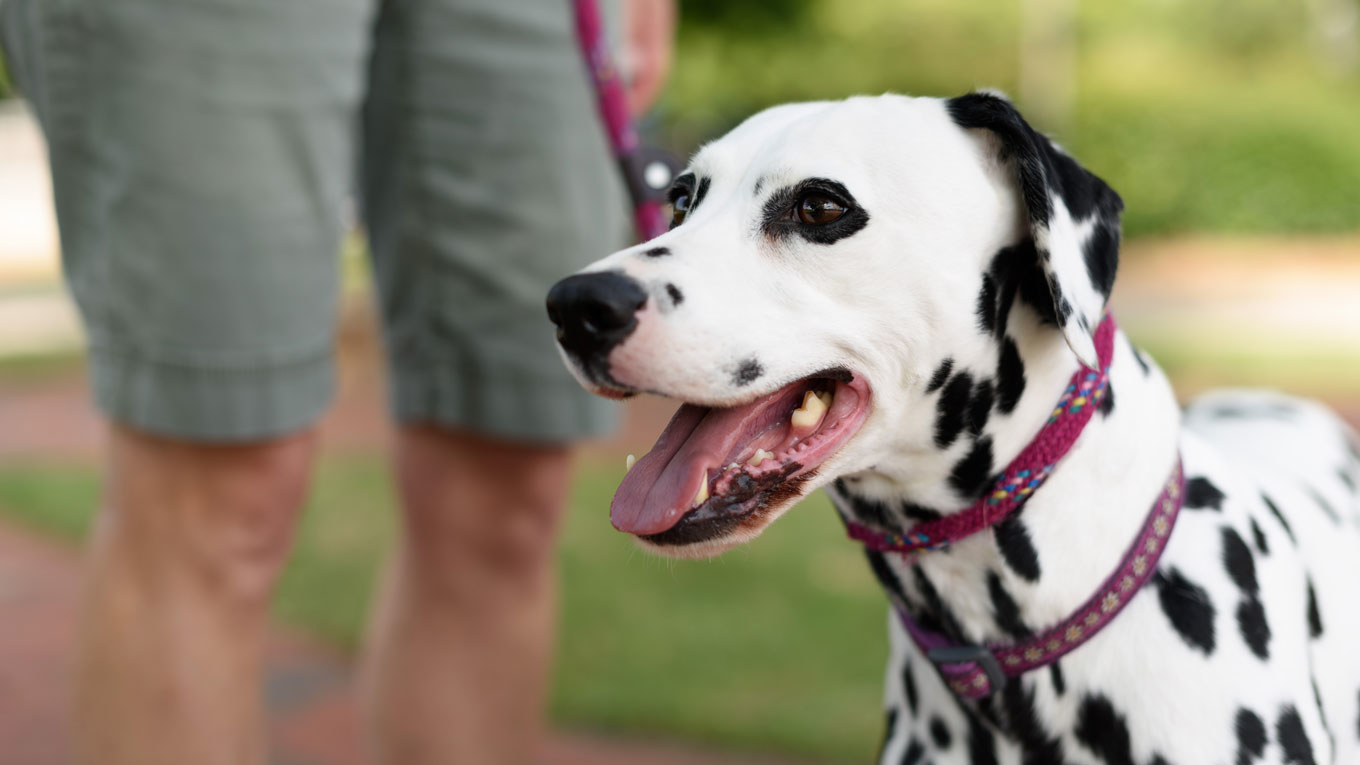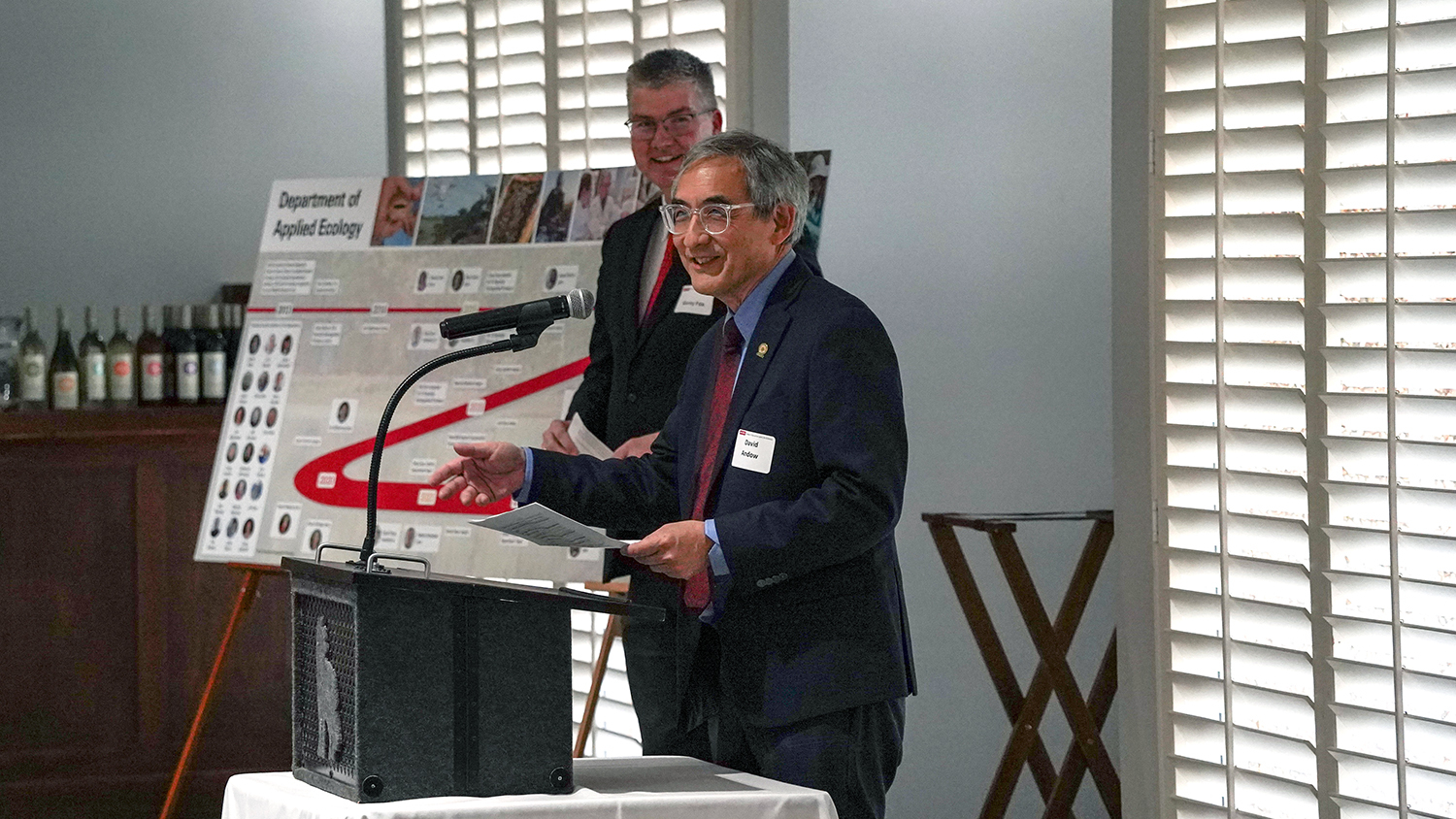Extraordinary Teamwork

Veterinary medicine isn’t exactly a team sport, but you might be surprised how much great teamwork it takes to come out ahead of the game.
Mary Kate is a 6-year-old female Dalmatian who has come out a winner thanks to quick thinking and teamwork by clinicians at the NC College of Veterinary Medicine and Veterinary Hospital.
Initially, Mary Kate was scheduled to come to NC State by her owner, Michele Wrath, because of fertility issues. She originally came to see Scott Bailey, associate professor of theriogenology and a board certified expert in canine and equine reproduction.
It was during the course of several visits that a sudden — and unrelated — problem came up.
About a week before the appointment, Mary Kate’s owner, Michele Wrath, noticed a change in her dog’s breathing. Wrath decided to schedule a visit with her local veterinarian to make sure Mary Kate was all right. That visit did not detect a problem.
Nonetheless, Wrath remained concerned. When Mary Kate’s breathing was noticeably more labored, Wrath contacted Bailey and requested an appointment as soon as possible. Bailey was at NC State’s Equine Center in Southern Pines at the time, but he agreed to return to the Veterinary Hospital to see Mary Kate that afternoon.
After the examination, Bailey immediately referred Mary Kate to the hospital’s emergency room, ensuring immediate attention. A radiograph of Mary Kate’s chest revealed that she had a severe bilateral tension pneumothorax or collapsed lungs.
This dangerous condition occurs when air leaks between the lungs and chest wall. Emergency personnel inserted tubes into Mary Kate’s chest to remove the excess air, and the dog’s condition rapidly improved.
Wrath was relieved to see how much better Mary Kate appeared to be.

“Shortly after they started to treat her we were allowed to see Mary Kate,” said Wrath. “She was standing in the kennel in ICU attached to a variety of devices, wagging her tail as if nothing had happened.”
But Mary Kate wasn’t out of the woods. There was still a lingering pneumothorax on the right side. Nevertheless, she had stabilized and there was no need to take further immediate action. She remained in the hospital for clinicians to observe her and carefully plan future actions.
Surgery resident David Knazovicky became involved with the case. Extensive examinations and continued treatment failed to identify a specific cause for the issue on Mary Kate’s right side. The problem was termed an idiopathic pneumothorax, a spontaneous issue with an unknown underlying cause. All that was certain was that Mary Kate had a small lesion in her right lung that was the source of the problem.
Seeking to resolve the situation with a less-invasive approach, Knazovicky tried a procedure called blood pleurodesis. The patient’s blood is drawn and injected into the space between the lungs and the chest wall that is sometimes is sufficient to create a seal over a lesion leaking air. The procedure was attempted twice, but failed to seal the leak. The final resort was surgery.
A CT scan also indicated a lesion in the right middle lung lobe, so Knazovicky and Marije Risselada, assistant professor of small animal soft tissue and oncologic surgery and senior clinician on the case, removed the lobe.
Mary Kate came through the procedure well; the leak was finally eliminated. The surgery was done in April and by mid-June, Mary Kate had healed well enough that, except for occasional mild discomfort, she is essentially back to normal.
“We’re very grateful for the care she received at NC State,” Wrath said. “She’s made a great recovery. In fact, she’s on her dog bed right now watching me talk with you.”
And it all happened some seamlessly.
That Scott Bailey responded so quickly to Wrath’s call, making the drive from Southern Pines to Raleigh to see Mary Kate and immediately turning the case over to emergency personnel who stabilized the dog, and then to have the problem identified and resolved by the surgical team, it could all seem almost routine.
But then, that’s just how great teamwork looks. If you can excuse the sports analogy, it’s like a well-executed double play in baseball — the ground ball is fielded, then thrown to second, and then to first base, and boom, just like that, two outs. Easy as one, two, three, right?
Well, all it takes is rare talent, highly developed individual skills honed through years of diligent effort, genuine care for patients and lots and lots of practice to make it look so easy.
Fortunately for Mary Kate, that’s exactly what was available to her at NC State.
~Steve Volstad/NC State Veterinary Medicine
This post was originally published in Veterinary Medicine News.
- Categories:


